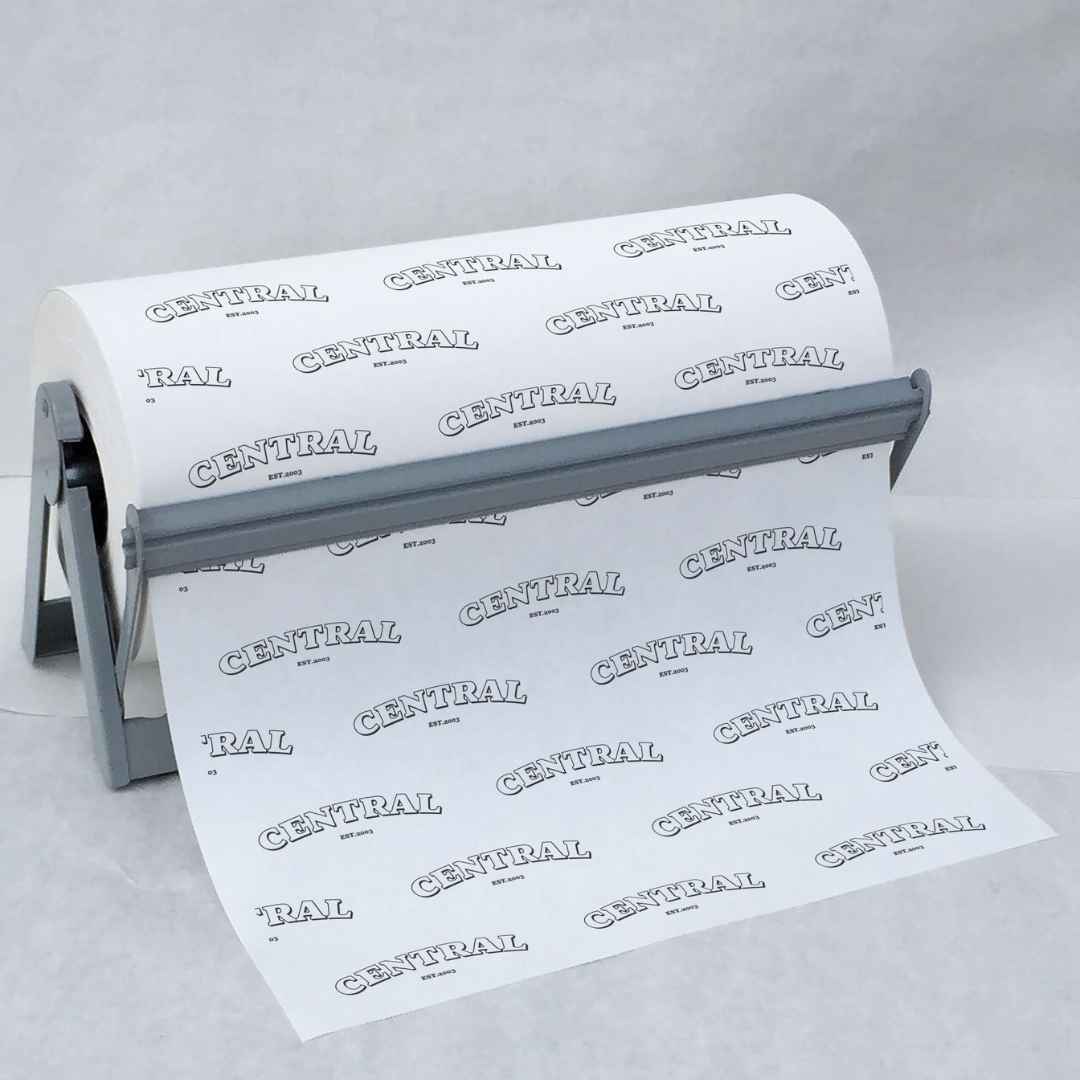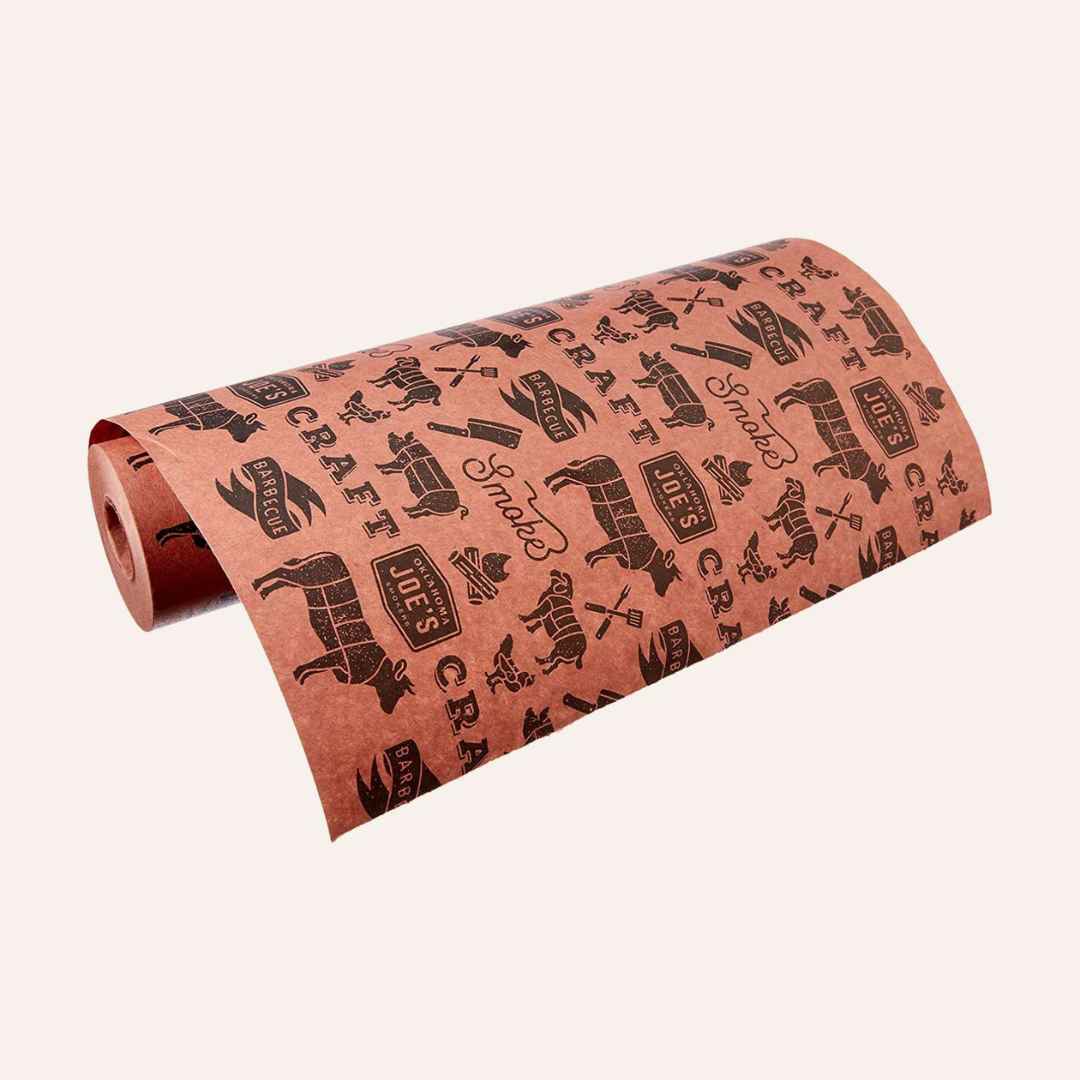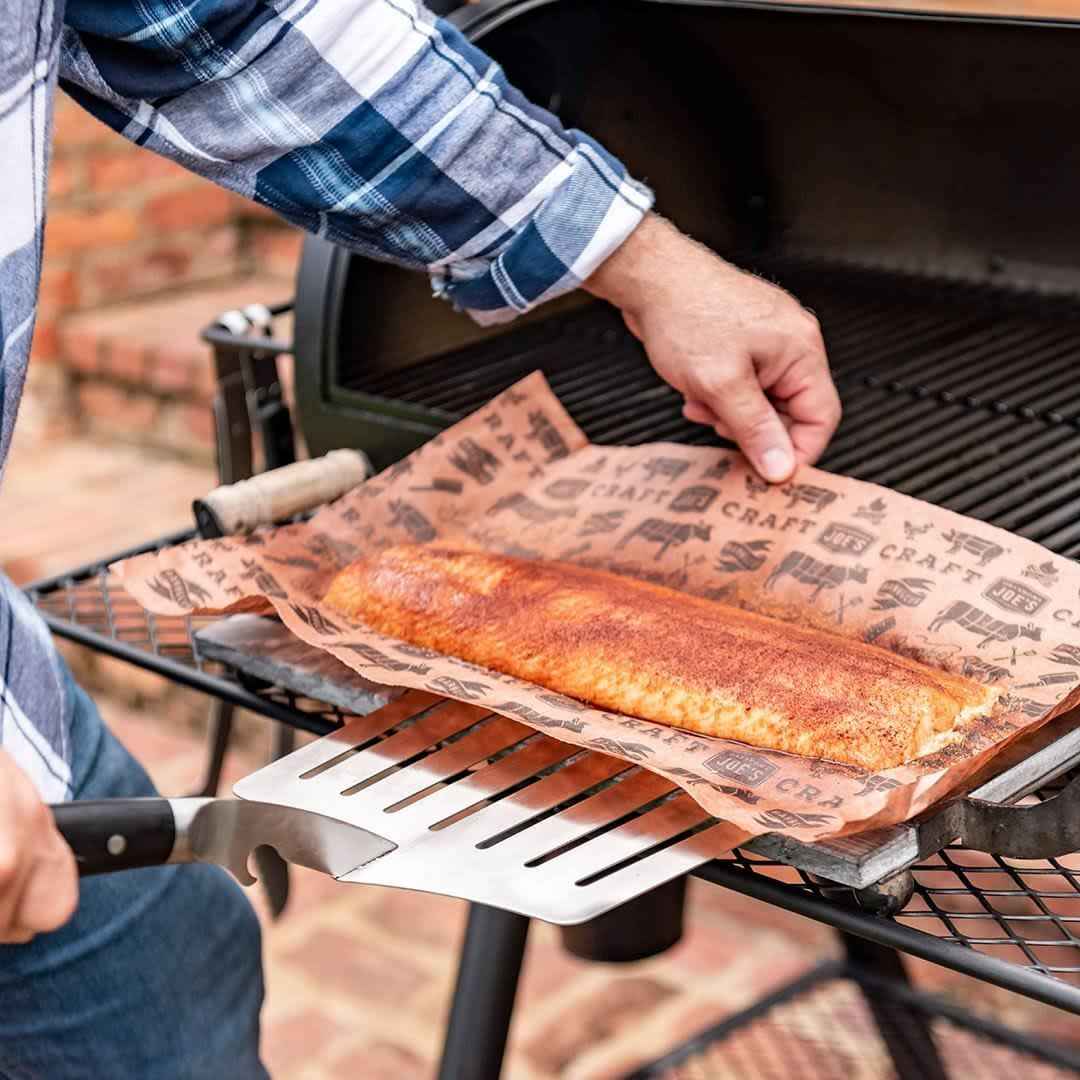Shipping your products in the best packaging is essential for the success of your brand. Similarly, displaying your items in an eye-catching manner in retail stores can make the difference between making a profit and losing money.
However, if you run a direct-to-customer business like a butchery, how can you maximize your branding? A custom butcher paper roll offers a simple, streamlined way to incorporate your brand into your customer's buying journey. The key is to choose the right butcher paper to suit your needs, as there are multiple types that can be used in many ways.
In this article, we’re going to cover what butcher paper is, the different types, and we’ll answer the common question, “is parchment paper the same as butcher paper?”.

What is Butcher Paper?
Butcher paper is a type of thick paper that is made out of wood pulp, similar to most other paper packaging solutions. It comes in a variety of forms, each with a unique color designation to indicate what properties it has.
Although you can get brown butcher paper, it also comes in white and pink. The type of paper you will need for your brand will depend on how it will be used. Regardless of the type or color, you need to make sure you’re using high-quality butcher paper. Low-quality paper can lead to leakage or print transfer onto the meat wrapped inside.
What Are the Different Types of Butcher Paper?
When you’re shopping around for butcher paper roll to package your meat or other food products, you will be faced with a few different choices.
The key to choosing the right variety is to balance your budget with your food-safety and branding needs. In pursuit of that, let's review the types of butcher paper you'll encounter while shopping.

Brown butcher roll
The most common choice is brown paper, which is sometimes referred to as kraft butcher paper because of its color. This is a great option for storing and delivering fresh foods or other food-related items. It's thick enough to protect the meat wrapped inside from airborne or contact contaminants while also preventing leakages.
This is often the most cost-effective solution, as it is the industry standard and has undergone the least amount of processing.
White butcher roll
Then there’s white butcher paper, which is very similar to kraft butcher paper. However, it has undergone a bleaching process to remove the natural brown color of the wood pulp. This makes it more expensive than its unbleached cousin.
White butcher paper is most commonly used to wrap and deliver deli foods, such as sandwiches, wraps, meats, and more. It can be used to wrap meat products before smoking them because it keeps moisture out while enabling smoke to efficiently cook the meat.
You may also see white butcher roll used for non-food-based purposes thanks to its clean appearance. It’s commonly used for disposable table coverings for arts and crafts stations, buffets, or presentation tables.
Pink butcher roll
Pink or peach butcher paper is most often used for smoking. The pink or peach tone of the paper comes from the natural color of the Southern Pine wood pulp used to produce it.
Like the original kraft butcher paper, the pink or peach variety is suitable for wrapping raw meats because it is thick and strong enough to prevent leakages. As a result, the paper won’t go soggy or fall apart during storage or transportation. It’s also great for smoking meats because it allows smoke in, while also keeping contaminants out.
Peach treated butcher roll
Similar to traditional pink or peach butcher paper, peach treated is suitable for wrapping fresh or raw meats. However, the side of the paper meant to touch the meat has an extra level of treatment to improve its wet strength. This prevents leakage over long periods of time, which is what makes this a favored variety of butcher paper among BBQ afficionados.
Peach treated butcher roll also prevents too much oxygen from entering the wrapping, which minimizes unwanted oxidation of the meat. This keeps the meat as fresh and vibrant as possible during storage.
Gardenia butcher roll
For top-of-the-line butcher paper, gardenia paper is the best option. It’s more protective against moisture and contamination than the other types of butcher roll. However, because of its premium quality, you’ll pay a higher price per roll.
Gardenia butcher paper prevents the leakage of meat juices and oils. It’s perfect for the packaging of red meats, poultry, and raw fish. The premium quality also makes it a popular choice for restaurants and takeout establishments.

What is the Difference Between Butcher Paper and Parchment Paper?
Now, let’s answer the common question that many people have when they’re finding the perfect food packaging solutions - is parchment paper the same as butcher paper?
The short answer is no! Although butcher paper and parchment paper are similar, parchment paper has a food-safe coating to make it non-stick. This makes it popular - both at home and in commercial circles - as an all-purpose food wrapping solution.
Parchment paper is more closely associated with baking and bakery products. Though you can still use this type of paper on a grill, you shouldn’t use temperatures that exceed 400 degrees Fahrenheit. Temperatures above this threshold could cause the parchment paper to smolder, which can contaminate your meat.
Wax paper is different yet again, featuring a food-safe wax coating to combat grease leakage.
Wrapping it up
No matter what kind of packaging you need for your business, noissue has you covered. For more advice on the best type of butcher paper for your brand, or for any other packaging needs, reach out to the team at noissue today!
Alternatively, explore our full sustainable packaging range to enhance your branding across the board.
